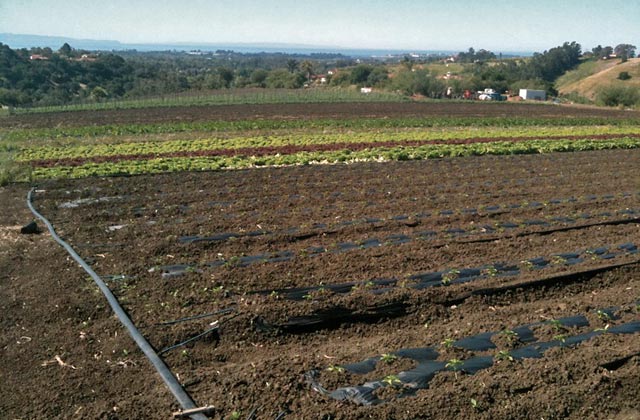The Greening of Agriculture
New Generation of Farmers Digging In

Here in Santa Barbara and across the nation, a new wave of promising young farmers are emerging with a vision and purpose that seeks to redefine what it means to produce food and sustain communities. A fundamental component of this emerging movement is the concept of collaboration, which may seem at odds not only with our current farming model, but also with our concept of capitalism and conventional business practice.
The Greenhorns, a non-profit organization aimed at recruiting, promoting, and supporting young farmers, is helping lead the charge. As Olivia Sargeant of The Greenhorns recently explained, “Agriculture is inherently collaborative, and so looking back at the ways that agriculture used to exist in society before ‘industrial agriculture’ gives us an insight into how farming might function again today, with a focus on togetherness as a key tenet.”
Eager young leaders are answering the call to facilitate the growth of sustainable, community-based agriculture in this manner. Their mission is to preserve and re-create traditional agricultural systems that are rooted and supported within the regions where they operate. The Santa Barbara Farmers Market is a thriving example of this shift, where we are seeing a lessening of the distance between producers and consumers while strengthening ties between farmers and neighbors.
This collaborative nature of agriculture presents up-and-coming farmers with a wonderful range of opportunities. While it is understood that farmers must sell products to survive and thrive, this is beginning to happen in a manner where resources, information, infrastructure, and more are shared to a greater degree. Can one compete and cooperate? Yes, one can, and it’s referred to as “coop-etition.” Because the current food model has largely left small farmers fending for themselves, a shared approach has begun to yield exciting results.
There are other considerations as a new food system and agricultural model begins to take shape.
• New farmers are needed. The average American farmer today is 57 years old. We need new farmers. Momentum for beginning-farmer programs is picking up around the nation, many of them seeking to restore traditions of the past while utilizing new approaches and tools that look at the environment and the surrounding region as fundamentally linked to the overall health of farming.
•Barriers exist. Young farmers face plenty of obstacles as they the get started, land access and money being two of the largest hurdles to overcome. The Greenhorns support the right of “access to land” as a concept inherent to democracy in America. As difficult as it is, farmers are finding ways to access new land, getting creative when and where necessary. Idle plots, rooftops, urban neighborhoods. It’s happening.
•Politics matter. Politics play a critical role in food production and distribution. Ms. Sargeant explains that young farmers need to learn about the workings of the governmental realm. “It’s great that young farmers are farming, but it’s important to… educate themselves about the farm bill and some of the other policies that play a role.” The current farm bill, the Food, Conservation, and Energy Act of 2008, governs agricultural subsidy programs that impact the success of local farmers.
•Big ag matters. “Big agriculture” is part of the current food system and must be considered. It’s been said that the “culture” in agriculture has been lost, and that food production has simply become agribusiness. This approach has resulted in adverse impacts to the health of our people, our food, and our environment. Nevertheless, it’s important to recognize and use some of the tools that allowed big ag to thrive—distribution models, food safety standards, etc.—while recognizing that we live in a new era, with many constraints and vastly fewer resources.
“Being realistic in one’s approach and strategy towards inserting a local food economy into the way the world works is to acknowledge working within the system,” Ms. Sargeant states. “There are aspects of modernization that can be utilized in changing our structure.”
Emerging young agrarians are turning obstacles into opportunities, and new approaches, tools, and allies are helping them do so. As organizations like The Greenhorns support their cause, the seeds of change are being planted across the country one farm at a time. A transformation is steadily taking place—from the ground up.
The Greenhorns documentary will be shown at the Santa Barbara Public Library’s Faulkner Gallery on Wednesday, August 31, 6-8 p.m. The film will be introduced by Olivia Sargeant and followed by discussion with a panel of young local farmers.



